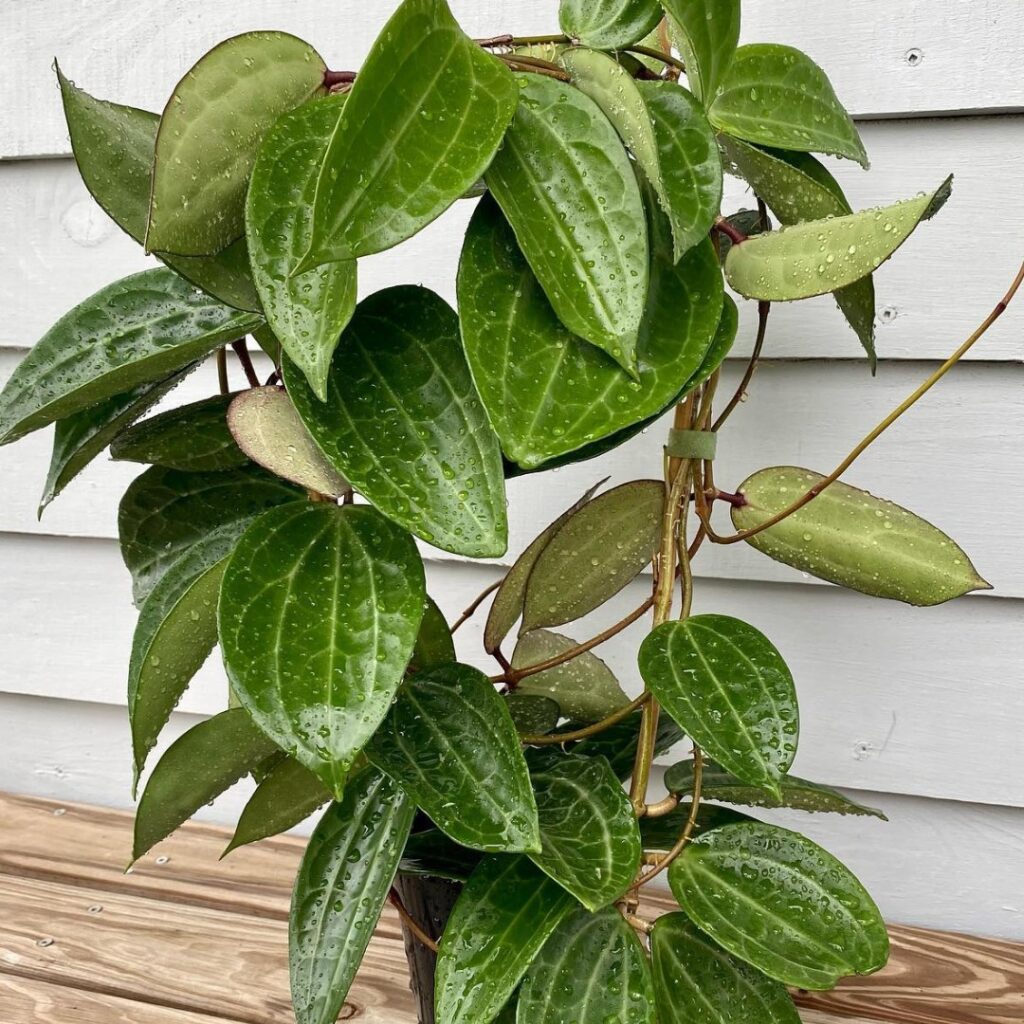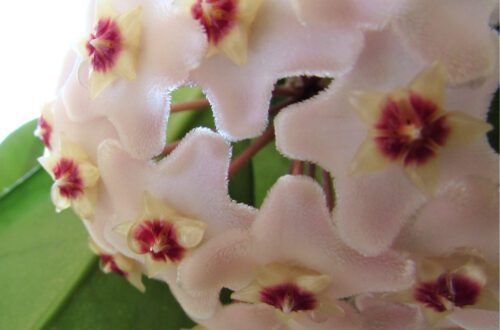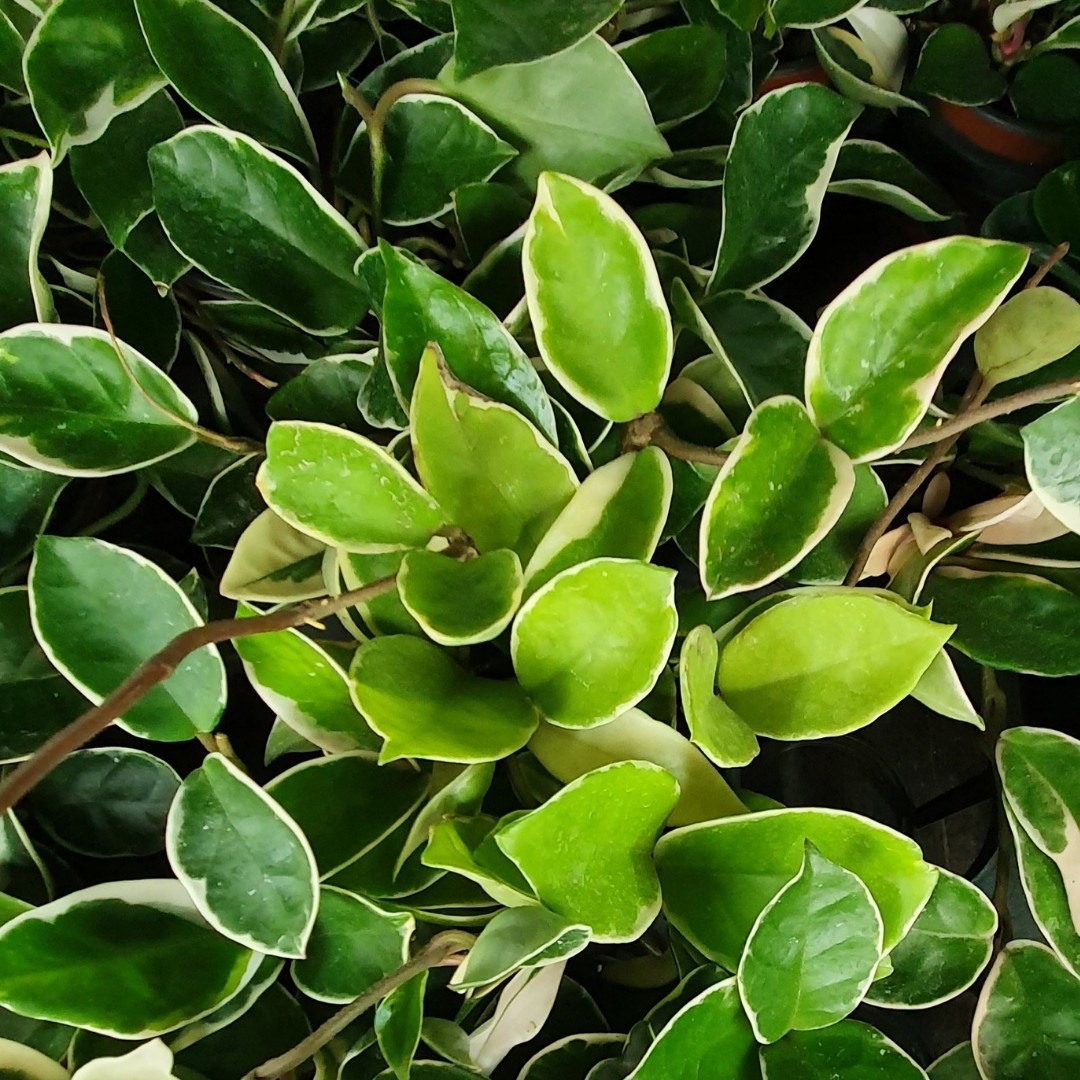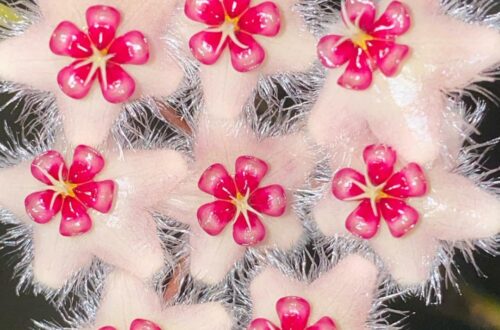
Hoya Latifolia
Welcome to our guide to the Hoya Latifolia all you need to know about care and propagation, including light, water, soil, temperature and humidity needs. The key to getting the best out of this plant is to keep it in a soil mix for epiphytes, and a decent humidity, as well as never overwatering it.
Hoya Latifolia Care Summary
| Light needs: | Bright indirect sunlight. |
| Watering needs: | Check weekly, let it dry out |
| Fertilizer: | High nitrogen fertilizer in the spring and summer. |
| Soil: | Hoya Soil. |
| Humidity: | 60%. |
| Temperature: | 70°F (20°C). |
| Where to buy: | Try our list of Rare Plant Shops. |
| Other names: | Dinner plate hoya. |
| Common issues: | Pests, overwatering. |
Introduction
Hoya Latifolia is a relatively rare species of succulents, popular for its breathtaking foliage and blooms. This striking epiphytic plant features oval, green leaves with clusters of tiny pink and white flowers. Given its origin in tropical areas of Singapore and Indonesia, it needs proper humidity and light conditions to grow well.
See also: Hoya Soil, Hoya Krimson Princess, Hoya Fungii, Hoya Lauterbachii, Hoya Callistophylla, Hoya Curtisii, Hoya Shepherdii, Hoya Imperialis, Hoya Sunrise.
Tip: we recommend Etsy for buying plants. Look for the best rated seller you can, and try to buy as close to your home as possible so the plant does not travel too far.
A note about affiliate links: when you buy a plant, pots, soil, or other goods through links on this article we sometimes earn a commission. It doesn’t cost you anything, but it really helps us out if you do use them. Thanks a lot! An example of this is if you buy a plant on Etsy using this link. Read our privacy policy for more information. Thanks again.
Hoya Latifolia Light Needs
An East-facing window with partial shade works the best when it comes to the light requirements. Since it is accustomed to growing on trees under shade, it demands the same lighting in your home too.
How Often To Water
Ideally, you should be watering once a week to every ten days, thanks to its thick, leathery leaves. However, the intensity may vary depending on where you live. To ensure you do not overwater it, allow the soil to dry between watering and check the soil condition by inserting your finger in the top layer.
Fertilizer
High nitrogen fertilizer in the summer or spring works great in early flowering. Feed them once a month or every 3 or 4 weeks in the spring and summer.
Hoya Latifolia Soil
As an epiphyte, it needs a light, airy substrate to grow in. you should invest in a well-draining, organic potting mix with perlite and peat moss or simply make your own at home by mixing the ingredients. See our guide here: Hoya Soil.
Tip: make sure you give them a soil mix suitable for epiphytes that has plenty of orchid bark, as they hate to sit in heavy wet soil and will get root rot easily. Remember that they grow on tree bark in the wild and not in soil. For more info see our guide: Hoya Soil.
When to Repot
The cramped roots mean you do not have to repot the plant frequently. It takes anywhere around 2 to 4 years for the roots to outgrow the container, so you are all set for a few years. Repot it during the growing period, so the roots have time to settle.
Hoya Latifolia Humidity
Its tropical origins means it needs a high humidity level to thrive. But do not worry! The thick leaves store enough moisture to make it through a dry spell. It prefers humidity above 60%, but the average household air works fine too.
Temperature
It grows best in moderate temperatures around 70°F (20°C). However, below 13°C, the growth significantly slows down and may adversely affect the plant.
How to Propagate Hoya Latifolia
You can propagate Hoya Latifolia through stem cuttings as well as seeds. Stem cuttings are more prevalent among the gardener community for maintenance and easy after-care. Planting the cuttings in the spring and summer yields better results since the plant gets ample time to root and settle.
Why Hoya Latifolia Is Turning Yellow?
They can get root rot easily, which causes yellow leaves. Do not let them sit in wet soil and always make sure the soil is dry all the way down before watering again.
For more on hoyas see our hoya category with all our hoya care guides.
Hoya Latifolia USDA Zone
The can grow outdoors in zones 9-11.
Hoya Latifolia Vs Sarawak
The sarawak is another name for the latifolia. The latifolia is from Sarawak in Malaysia.
Other Names
Dinner plate hoya.
Where To Buy
Try our list of Rare Plant Shops.
Hoya Latifolia FAQs and Common Problems
Hoya Latifolia is generally a hardy plant, but it may be subject to pest infestations and root diseases due to its succulence. Regular neem sprays keep the aphids and mealybugs at bay. Do not water it excessively! While it is important to keep the soil moist, allow it to dry between watering.
Is Hoya Latifolia toxic to cats?
It is not toxic to cats or humans.
Limping of Hoya Latifolia
The most common cause of limping or wilting of Hoya Latifolia is overwatering. Excessive watering leads to root rot which causes the plant to limp. Using well-draining soil helps in maximizing the drainage.
What is the best potting mix for Hoya plants?
Hoya plants need a porous, well-draining mix to ensure no water stands in the roots. Adding perlite and coconut coir to the mix helps enhance the drainage.
Additional Resources
Buy: we recommend a digital thermometer hygrometer (amazon affiliate link) to measure humidity.
Links:
- More info on the Kew Gardens plant page.
Other Articles You Might Like
There you have it, here ends our guide to this beautiful plant. You might also like our other articles:
Hoya Soil, Hoya Krimson Princess, Hoya Fungii, Hoya Lauterbachii, Hoya Callistophylla, Hoya Curtisii, Hoya Shepherdii, Hoya Imperialis, Hoya Sunrise.
Please follow us on Instagram and Pinterest for regular plant updates and occasional plant giveaways.





